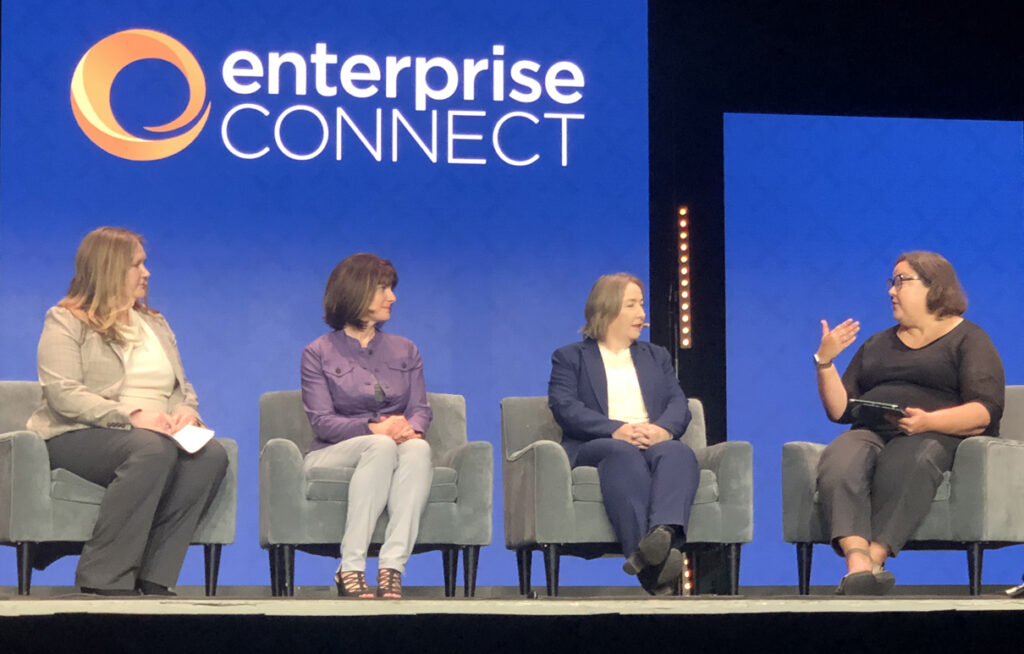For women IT leaders, management and communication skills learned at home can be translated to success at work – and vice versa. “My daughter made me a better leader,” said Sinead Aylward, senior director, Johnson Controls. “She has special needs, and setting goals and managing her growth was really helpful for me.”
Being organized is important with family as well as work, said Stacey Caster, SVP, Rocket Companies, who loves “checking off the boxes each day,” and bringing different personalities together. “Empathy and listening skills are great for environments,” added JoDe Beitler, technical director, University of Pennsylvania.
Aylward, Caster and Beitler were panelists at an Enterprise Connect discussion on Women in Communications moderated by Lisa Schmeiser, program co-chair. She noted that women only hold about one-quarter of all tech jobs and are consistently underrepresented at management levels.

Building your brand
“Your personal brand begins at the water cooler in the office, or today’s online version,” said Aylward. “So, you want to position yourself favorably in their minds, such as being great at problem solving or showing the value you bring to the workplace.”
Beitler encouraged women leaders to be assertive in the workplace. “Ask for what you need,” she said. “It won’t make you less of an employee.”
Managing multiple demands
For Caster, maintaining a daily schedule including workouts, sleep and good nutrition is the foundation for managing work and home demands. Beitler says she sets boundaries and sets aside evenings as family time. “Unless it’s an emergency, I tell my team it can wait till the morning,” she added.
Developing a support network
All three leaders emphasized the importance of building a support network. For instance, Beitler said she participates in a neighborhood group of women leaders who get together monthly and talk about their issues. Caster is involved with the Michigan Council of Women in Technology that meets every six to eight weeks, while Aylward is building a trusted personal network of advisors.
Advancing women leaders
Schmeiser asked the panelists how to overcome self-limiting beliefs and behaviors that can hold people back from leadership roles. “If you feel like you don’t know enough about a topic, you don’t speak up,” said Caster. “So, if you see a woman sitting in the back of the conference room or not participating on a video call, ask a question and pull that person into the conversation.”
Beitler said she encourages women who feel unqualified for a new position to apply for the job, even if they don’t have 100 percent of the credentials. “Sometimes, you have to give them a little boost,” she added.
Growing a talent pipeline
The panelists agreed on the need to bring more women into STEM careers – a process that can begin at an early age. “We have programs at our university, but it’s really important to reach a young audience,” Beitler said. “For instance, we set up computers for kids to take apart on ‘bring your children to work’ days.”
Caster noted the importance of modeling, so girls and young women from diverse backgrounds can picture themselves in STEM careers. Real-world experiences are also important, said Aylward, told a story about bringing second-graders from an impoverished Chicago neighborhood up the building’s elevator into her office. “One girl told me, ‘this is the best day of my life,’” she said. “That shows that have work to do to overcome this systemic inequality.”